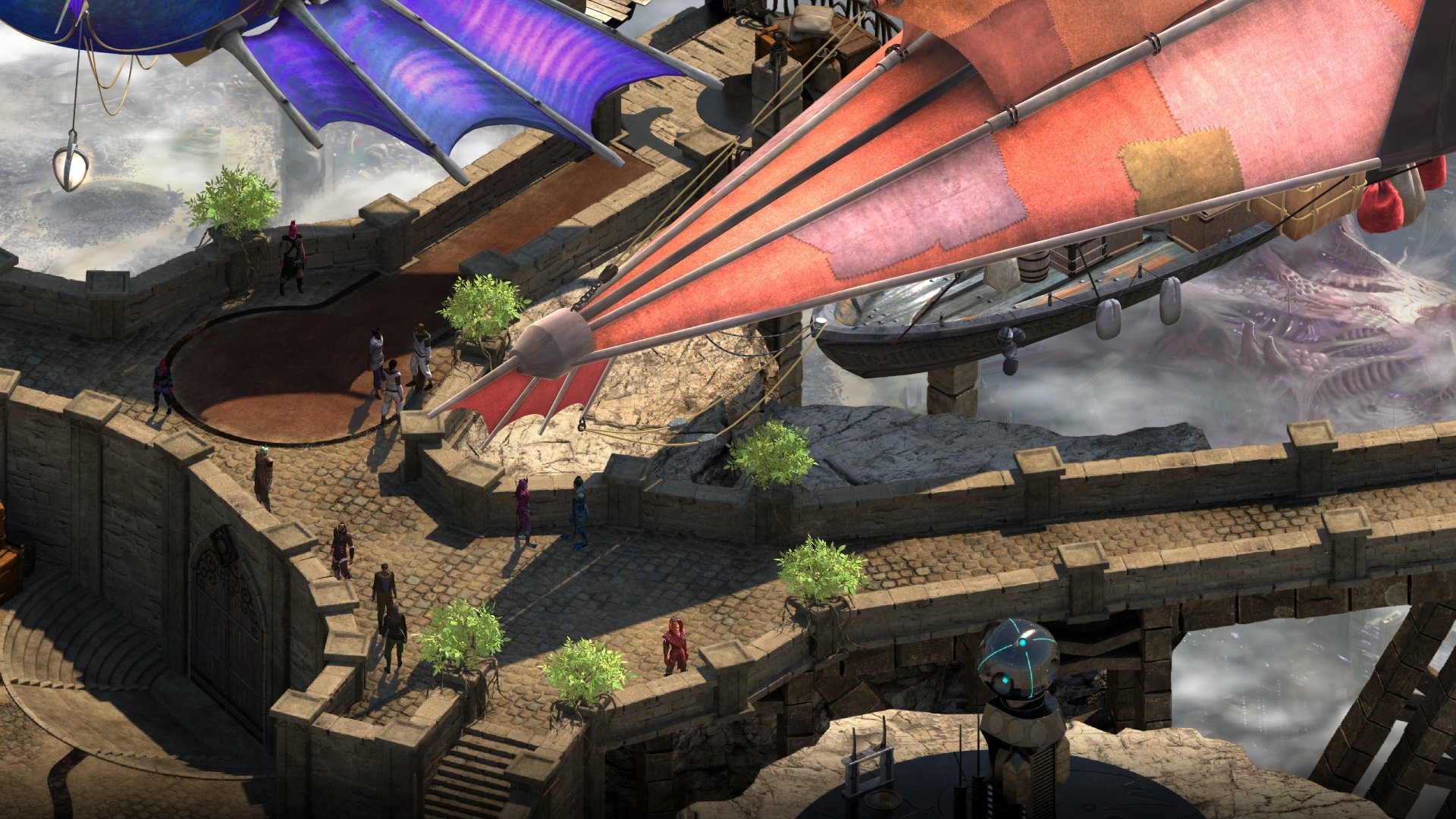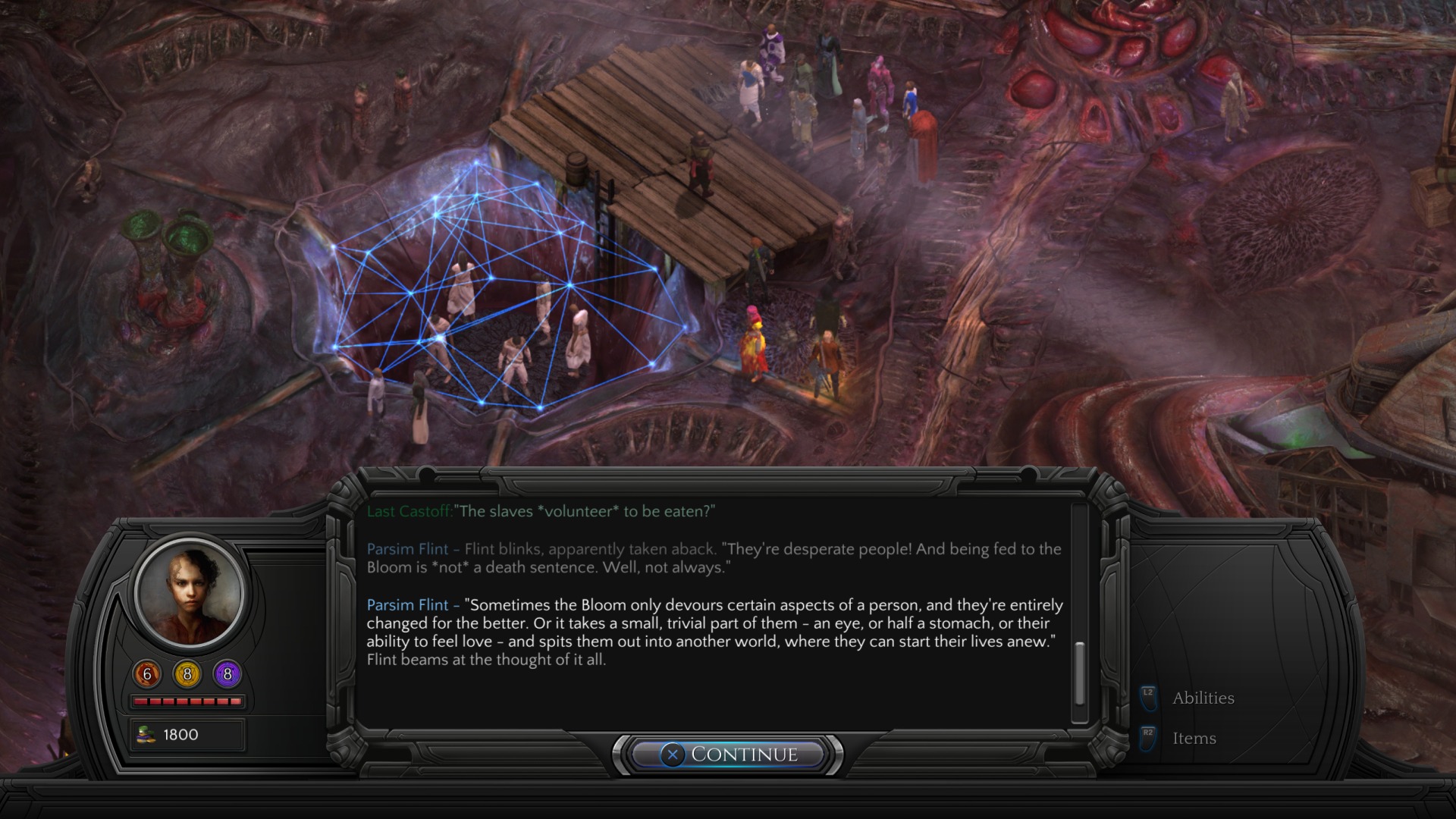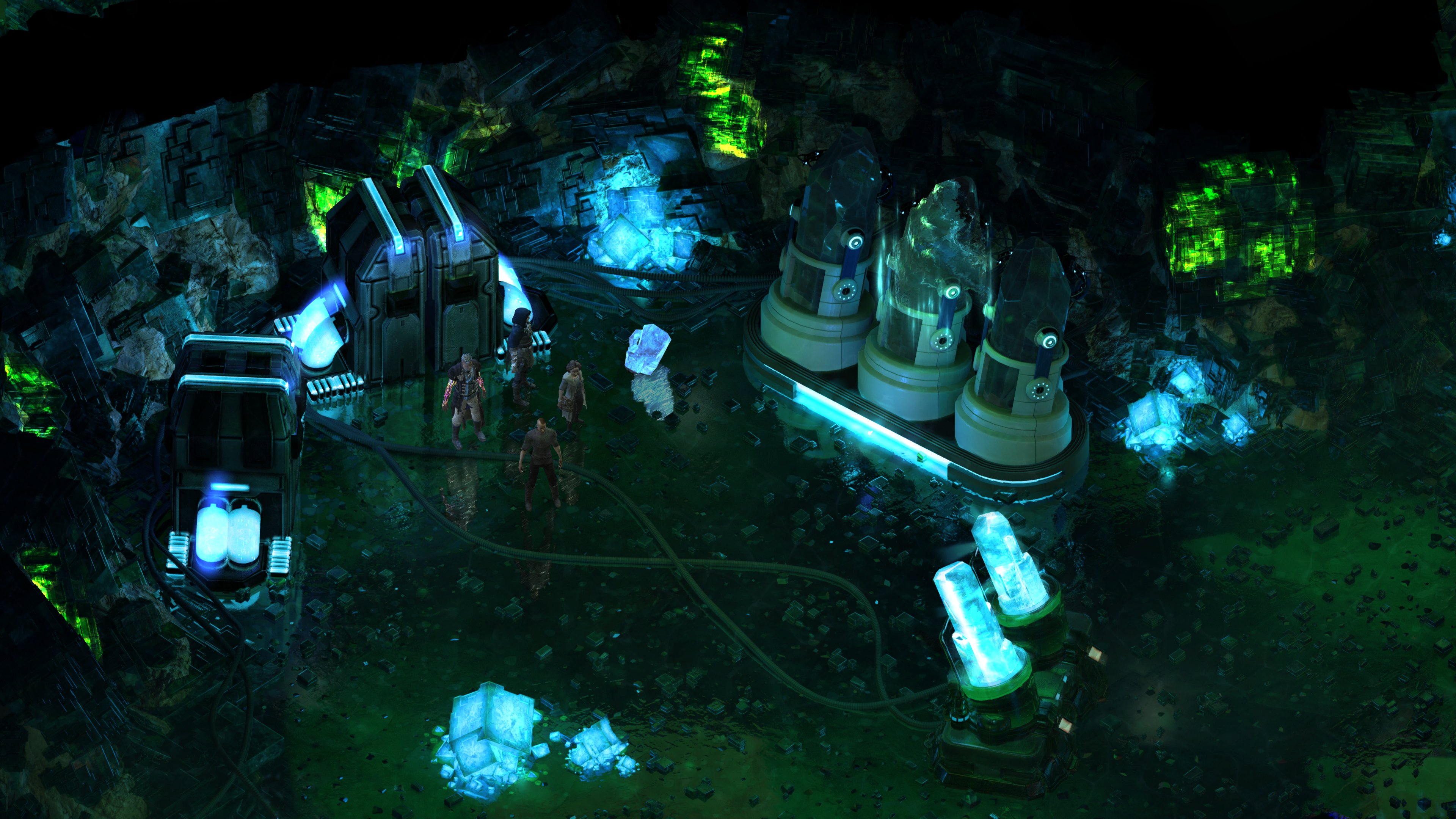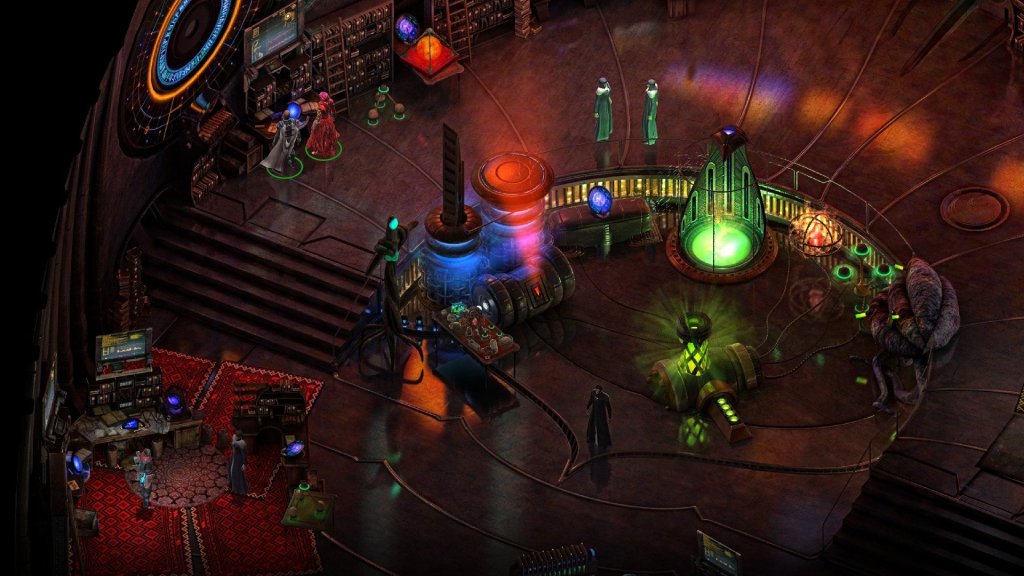Your choices matter. Has anyone else heard that lie? Odds are the answer is “yes” if you’ve played a game in the last decade. Too many times have we played a game with lots of choices throughout only to end by picking the exact way we want the game to conclude. Or we’ll be given a side quest that seemingly has tangible effects on important characters or factions only to see that aspect never acknowledged. The truth of the matter is that, no matter how many times we hear it, your choices ultimately don’t matter anymore.
Oh, hey, Torment: Tides of Numenera. Didn’t see you there. You what? … They do? … Every single one?
Here we arrive at the exception to that recent rule, or, rather, developer inXile Entertainment has delivered it to us after several years in development and a lengthy Early Access period that followed a successful kickstarter campaign. Torment: Tides of Numenera will feel like a different game each time you play it, and offer a different playthrough than the one your best friend of sibling will have, and it’s able to do that with an ardent focus on truly variable storytelling without being strapped down by a hard-and-fast alignment system and gameplay elements that do just enough to not get in the way.
The Basics, If You Can Call Them That
Tides of Numenera is as difficult as to explain as it is to understand. You’ll be given a deluge of information when you first launch the game, and your eyes will surely glaze over faster than you can exit out, especially if you’re someone who picked this game up casually. If you’re confused by terms such as “Tides,” “Fettles” “Sorrow,” or “Changing God,” just wait; you don’t even know the half of it.
I was tempted to start this paragraph with the word “basically,” but that’s clearly a misrepresentation of the subsequent sentences. You play as a fragment of a powerful being, one of many such beings known as “castoffs,” only you are the last one. As The Final Castoff, you find yourself up against a malevolent force known as the Sorrow. Using Might, Speed and Intellect to varying degrees, you must complete various quests and adventures that help unravel big and small mysteries on your way to figuring out what forces are at play and either stopping or joining them.
inXile decided to hell with traditional alignment systems and went with a new mechanic: tides. Tides are represented by five different colors, each of them indicative of different actions you take. Rather than being an ardent and static choice, Tides are a fluid representation of how your act throughout the game. Force your will upon others, you’ll find yourself dominated by the Red Tide. Seek out the knowledge without bounds, you’re now a Blue tide. More than just a representation of your alignment, this will also affect how characters in Tides of Numenera interact with your character.
Stats, Items and More

In order to maintain its status as an RPG, Tides of Numenera relies on three major stat pools, Might, Speed and Intellect, that influence the game in varying ways. Might will obviously determine how adept you are at physical tasks, such as breaking or moving objects. Speed will come in handy when you need to be more precise, such as grabbing a small object in motion. Finally, Intellect is used to deceive, persuade or gain more information about characters you meet.
But, rather than being a glorified dice-rolling simulator, or even just an on-screen D&D, there is almost always a way to succeed at an action 100 percent of the time, if you are willing to pony up for it. The more of a stat you spend to complete an action, the higher the percentage of success. If you spend enough to get it to 100%, congratulations, but you’ll find that’s not always the most equitable way to complete objectives. This addition helps Tides avoid the frustration of similar RPGs. Ultimately, the gameplay does its job, which is to not distract me from the premier offering of Tides of Numenera.
Tides of Numenera has many of the standard item types you can expect from an RPG. Light/medium/heavy armor and weapons, artifacts and such. You also have items that give you a one-time effect, adding another layer to various interactions. While this was a more standard-fare addition to an otherwise unique RPG, looting, selling and buying new gear, comparing stats never stopped being fun. My only criticism is a lack of explanation on different damage types versus resistances and weaknesses. Having played as much of the game as I have, I should be able to tell you when to go with transdimensional damage as opposed to energy damage, for example, but I’m just as clueless as I was when I started.
Choose-Your-Own Adventure

Other than that, you’re looking at one of the most in-depth and well-written choose-your-own-adventure games on the market, past, present, and I imagine future. You’ll talk to people, and be presented a list of responses. Many times, you’ll be able to come back to those responses and choose ones you didn’t already choose, but many of them will be strict choices that aren’t clearly defined. Even somethings as simple your various reactions to what people say can spark an immense chain of events so vast that won’t even be sure as to how you arrived where you are.
Torment: Tides of Numenera provided me an experience unlike any other in this respect. In choice-based games with strict alignment, I often try to make the choice most in-line with what alignment I chose to be. Even in a game as simple as Dishonored 2, I chose to keep my actions low-chaos. In Tides of Numenera, it was the opposite. Rather than react in a way that served a particular alignment, I reacted in whatever way felt most natural, and I let the game decide what alignment that was. In a way, Tides of Numenera is one of the most in-depth personality tests you can imagine.
More than just in the Tides, though, I had to seriously contemplate every possible choice. While some actions were more obvious than others, I still got the sense that every action could drastically affect my gameplay, so I had to tread very carefully. I’ve never had a better time walking on egg shells.
Conclusion

You start Tides of Numenera in a pretty cut and dry hub city, which can make the first act feel like a bit of a drag, even though it still has more to offer than any other futuristic city on the market. Then suddenly you reach a level that’s inside a giant monster called the Bloom, and it only gets more interesting from there.
The first act is a good way of setting up the universe, cleverly disguised as a full level, and I don’t mean that in a bad way. Just when I started to get the hang out things, inXile upped the ante, but instead of worrying or reaching for the “exit to desktop” button, I instead felt all the more prepared to greet what was coming.
It’s a well-executed set-up with a wondrous payoff. Whereas the fun in a game like For Honor comes from physically learning how to play, the fun in Tides of Numenera comes from achieving encyclopedic knowledge of a whole new universe through truly meaningful choices.
-
Choices that actually matter
-
In-depth, entertaining story
-
Original alignment system
-
Structured well
-
Poor explanation throughout











